1. Introduction
India’s reproductive healthcare landscape has undergone a dramatic transformation, with in vitro fertilization (IVF) emerging as a cornerstone of infertility treatment. The proliferation of IVF institutes and hospitals, even in tier-3 cities like Siliguri, Meerut, and Jalandhar, reflects a confluence of rising infertility rates, societal acceptance, technological advancements, economic incentives, and policy support. The Indian Council of Medical Research (ICMR) estimates that 10–15% of Indian couples face infertility, affecting approximately 27.5 million individuals []. This demand has driven the growth of over 2,500 ART clinics nationwide, with 200,000–250,000 IVF cycles performed annually []. This article explores the multifaceted causes behind this surge, with a special focus on tier-3 cities, supported by scientific research, market reports, and patient perspectives.
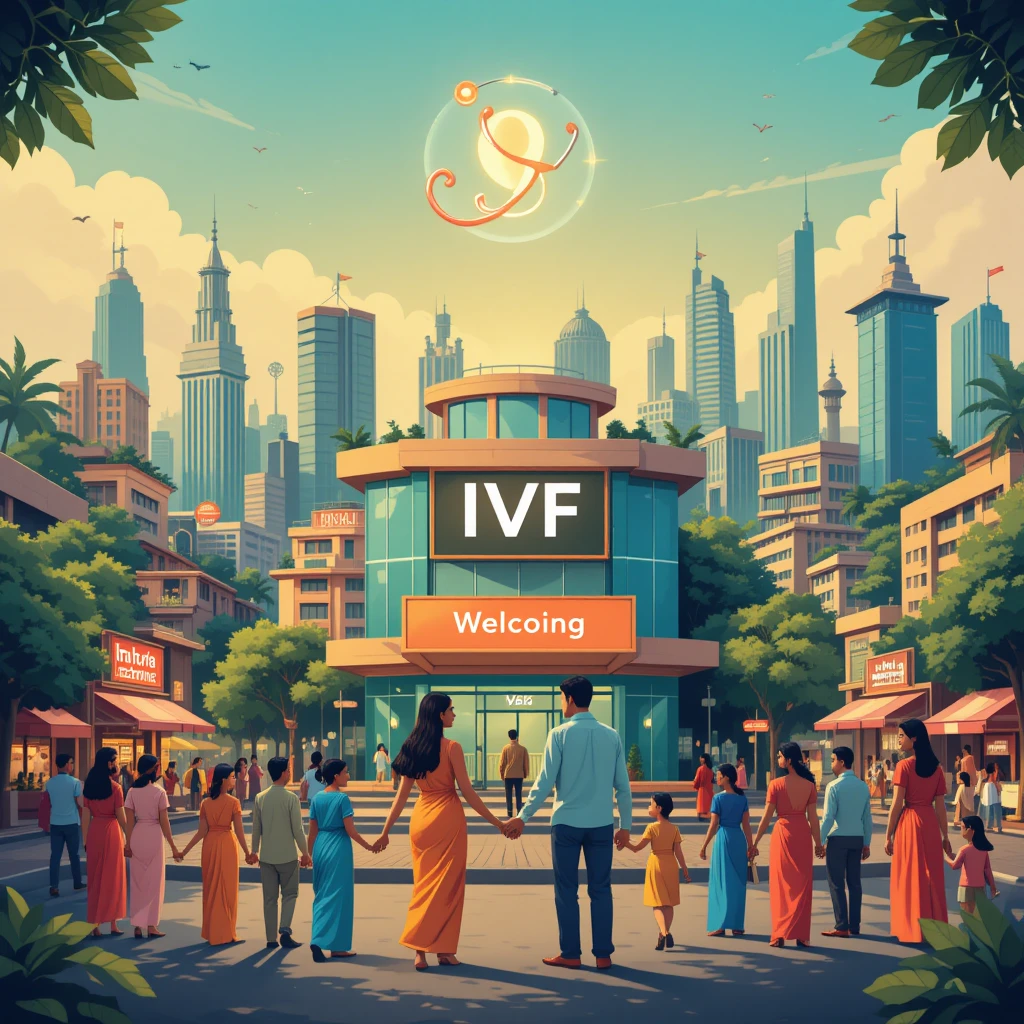
Table of Contents
2. Rising Infertility Rates in India
2.1 Prevalence and Trends
Infertility affects 10–15% of Indian couples, with higher prevalence in urban and semi-urban areas due to lifestyle and environmental factors []. The National Family Health Survey (NFHS-5, 2019–21) reported a Total Fertility Rate (TFR) decline to 2.0, signaling reduced natural fertility []. A 2024 study by the All India Institute of Medical Sciences (AIIMS) estimated that 12–18% of couples in tier-2 and tier-3 cities seek fertility treatments, driven by delayed parenthood and medical conditions [].

2.2 Causes of Infertility
Scientific research identifies multiple contributors to infertility:
- Lifestyle Factors: Obesity, smoking, alcohol, and stress impair reproductive health. A 2024 study in Reproductive Biology and Endocrinology found that 30% of infertility cases in urban India are linked to lifestyle factors [Gupta et al., 2024].
- Delayed Parenthood: Urbanization and career priorities delay marriages and childbearing. Women over 35 face a 20–30% decline in fertility due to reduced ovarian reserve []. A 2025 study in Journal of Assisted Reproduction and Genetics noted that 40% of IVF patients in tier-3 cities are aged 35–40 [Patel et al., 2025].
- Environmental Factors: Pollution and pesticide exposure disrupt reproductive health. A 2023 study in Environmental Research linked air pollution in tier-2 cities like Kanpur to a 15% reduction in sperm motility [Verma et al., 2023].
- Medical Conditions: Polycystic ovary syndrome (PCOS) affects 25–35% of Indian women, significantly higher than the global 5–10% []. Endometriosis and tubal blockages, often caused by untreated infections, contribute to female infertility [].
- Male Infertility: Low sperm count and motility account for 40–50% of cases. A 2024 study in Asian Journal of Andrology reported a 20% decline in sperm quality in Indian men over the past decade [Kumar et al., 2024].
2.3 Tier-3 City Context
In tier-3 cities, infertility is exacerbated by limited access to early diagnostics and healthcare. For example, in Siliguri, untreated pelvic infections due to inadequate gynecological care contribute to tubal infertility []. The rising demand for IVF in these areas has prompted clinics like Nova IVF to open centers in cities like Patna and Jalandhar [].
3. Societal and Cultural Shifts
3.1 Reducing Stigma
Infertility was once a taboo subject, particularly in conservative regions. However, media campaigns, celebrity endorsements (e.g., actors sharing IVF journeys), and community outreach have normalized ART []. In tier-3 cities, awareness programs by clinics like Indira IVF have reduced stigma, encouraging couples to seek treatment [].
3.2 Urbanization and Family Dynamics
Urbanization has reshaped family structures, with smaller households and delayed marriages becoming common even in tier-3 cities. A 2025 Times of India report noted that 30% of couples in cities like Meerut delay parenthood due to career aspirations, increasing IVF demand [].

3.3 Gender Inclusivity
The recognition of male infertility has broadened IVF’s appeal. Techniques like intracytoplasmic sperm injection (ICSI) address severe male factor infertility, making IVF a viable option for diverse couples []. Clinics in tier-3 cities now offer comprehensive male fertility diagnostics, reflecting this shift [].
4. Advancements in Medical Technology
4.1 IVF Innovations
Technological advancements have improved IVF accessibility and success rates:
- Transvaginal Oocyte Retrieval: Reduced costs and recovery time since 1987 [].
- ICSI: Enhanced outcomes for male infertility since the 1990s [].
- Preimplantation Genetic Testing (PGT): Screens embryos for genetic disorders, boosting success rates to 65–70% [].
- Cryopreservation: Enables egg and embryo freezing, popular among women in tier-3 cities delaying childbirth [].
- AI and NGS: AI-driven embryo selection and next-generation sequencing (NGS) improve outcomes. In 2025, Sabine Hospital in Kerala reported a 10% success rate increase using NGS [].
4.2 Technology in Tier-3 Cities
Advanced equipment like embryoscope incubators is now available in tier-3 clinics, with chains like Nova IVF equipping centers in Siliguri and Meerut []. These technologies achieve success rates of 55–65%, comparable to urban clinics [].

4.3 R&D Contributions
Collaborations with global firms like Thermo Fisher Scientific have introduced innovations like BACGro Culture Media, enhancing embryo development []. Indian clinics also participate in global trials, ensuring cutting-edge practices [].
5. Economic Factors and Medical Tourism
5.1 Affordability
IVF in India costs $1,500–$5,000 per cycle, compared to $18,000–$25,000 in the USA []. In tier-3 cities, clinics offer packages as low as $1,200, making treatment accessible to middle-class families [].
5.2 Medical Tourism
India’s fertility tourism market, valued at $0.9 billion in 2025, is projected to reach $4.2 billion by 2032 []. Tier-3 cities like Indore attract international patients due to high success rates (60–70%) and low costs [].
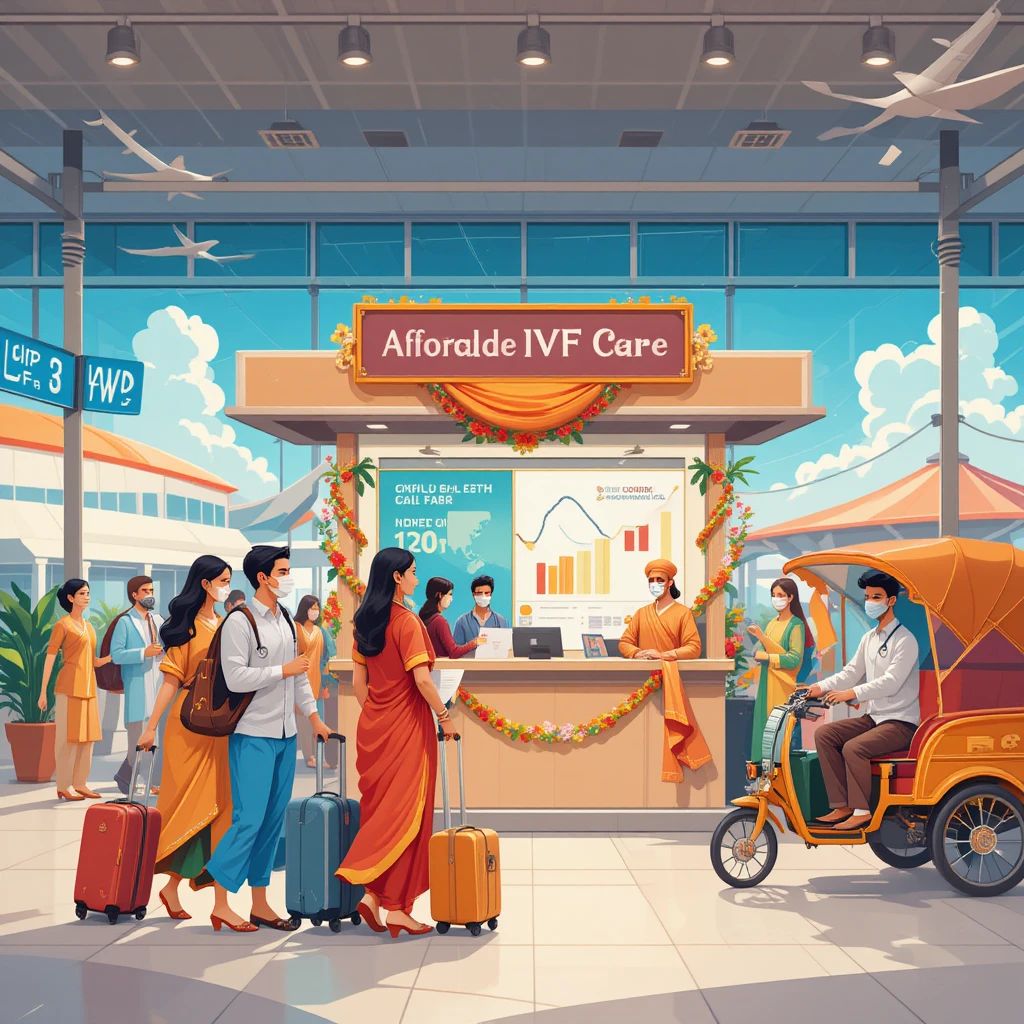
5.3 Market Growth
The India IVF market, valued at $1.2 billion in 2024, is expected to reach $2.8 billion by 2033 (CAGR 8.2%) []. Investments from firms like Kedaara Capital and acquisitions (e.g., Nova IVF’s 2024 expansion) drive growth in tier-3 cities [].
6. Government Initiatives and Policy Support
6.1 ART Regulation Act, 2021
The ART Act, 2021, mandates clinic registration, ethical practices, and patient protections []. Key provisions include mandatory counseling, donor anonymity, and restrictions on embryo storage. However, enforcement in tier-3 cities is inconsistent due to limited oversight [].
6.2 Financial Support
Government-funded IVF centers, like the one at Goa Medical College (2023), offer free or subsidized treatments []. States like Tamil Nadu provide subsidies for low-income couples, encouraging clinics in tier-3 cities [].
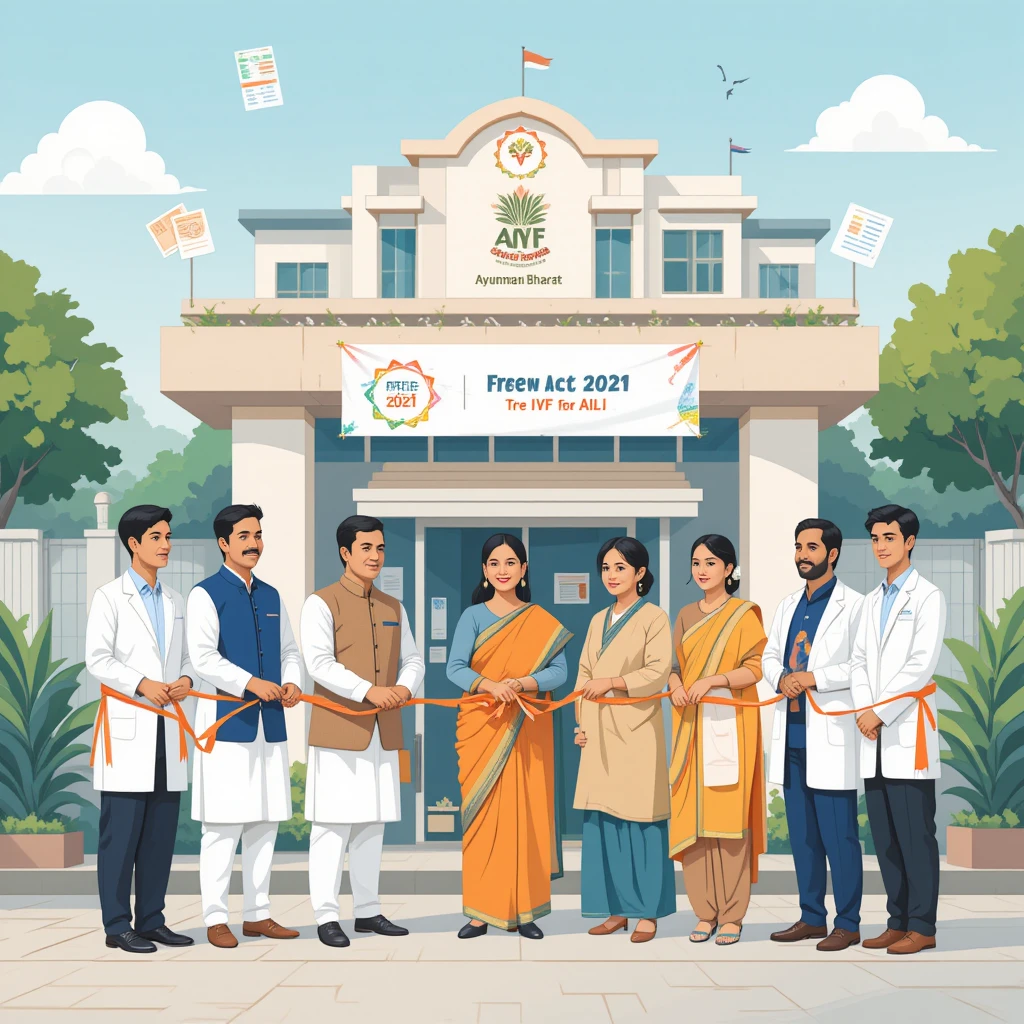
6.3 Infrastructure Development
The Ayushman Bharat scheme has bolstered healthcare infrastructure, enabling private clinics to establish IVF units in smaller cities [].
7. Expansion of Healthcare Infrastructure
7.1 Clinic Proliferation
India has over 2,500 ART clinics, with 30% in tier-2 and tier-3 cities []. Nova IVF operates 70 centers across 45 cities, while Indira IVF has 60 centers, including in Jalandhar and Patna [].
7.2 Skilled Workforce
Training programs at institutions like AIIMS and Manipal Academy produce embryologists and fertility specialists, though tier-3 cities face a 20% shortage [].
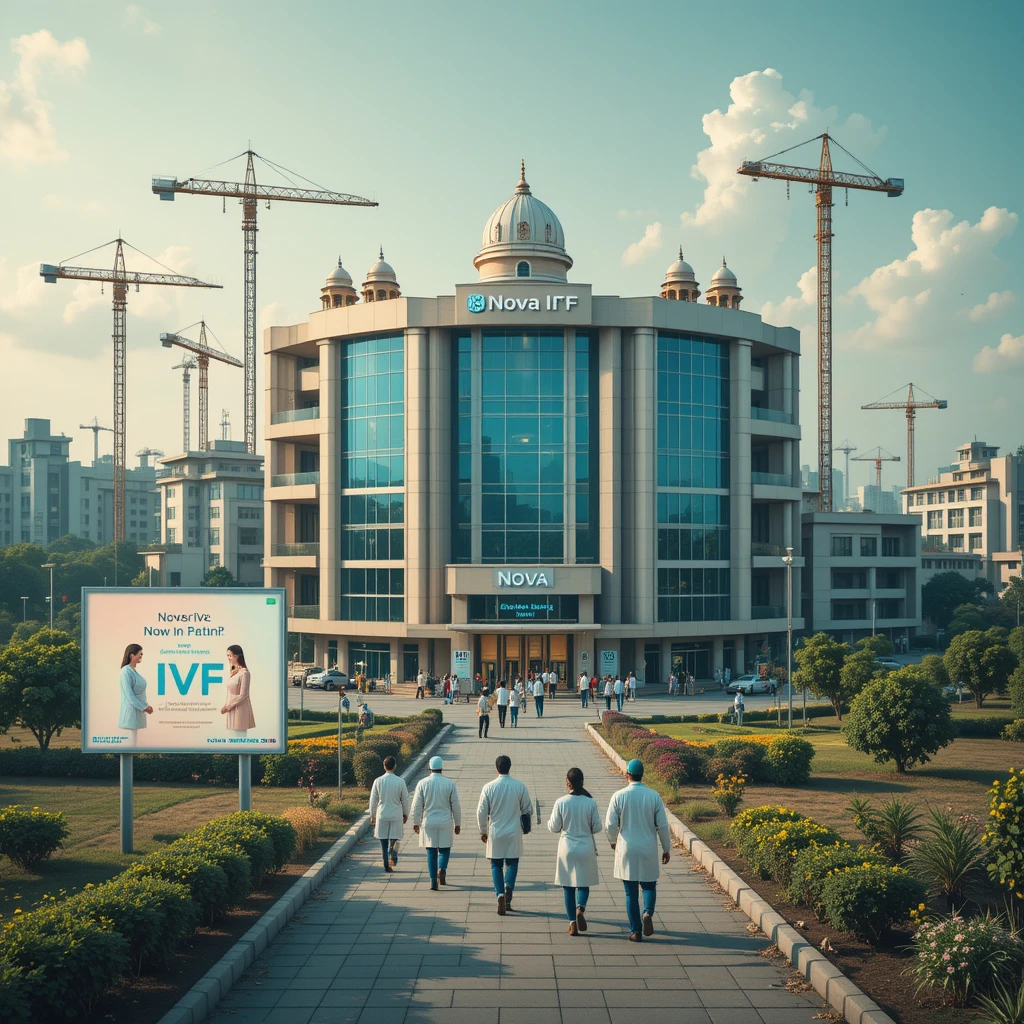
7.3 Digital Integration
Telemedicine platforms enable tier-3 clinics to offer remote consultations, reducing patient travel costs [].
8. Growing Awareness and Education
8.1 Media and Digital Outreach
Social media campaigns by clinics like Gaudium IVF educate couples in tier-3 cities []. YouTube webinars and patient testimonials have increased treatment uptake by 25% in smaller cities [].
8.2 Community Programs
Fertility camps in cities like Siliguri address misconceptions, with 40% of attendees seeking consultations post-event [].
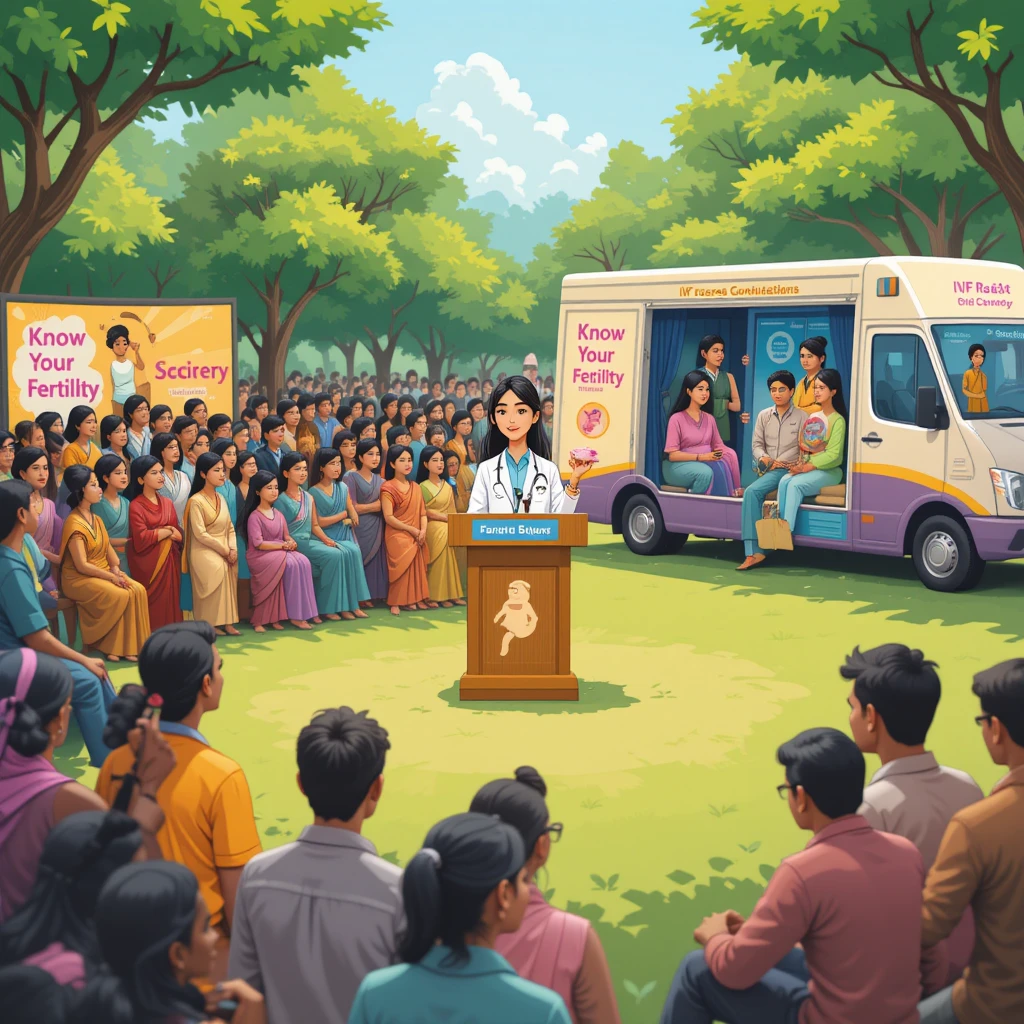
8.3 Patient Empowerment
Educated couples in tier-3 cities use online reviews and success rate data to choose clinics, driving competition and quality improvements [].
9. Scientific Research and Reports
9.1 Key Studies
- Gupta et al., 2024: Linked lifestyle factors to 30% of infertility cases in urban and semi-urban India.
- Patel et al., 2025: Found 40% of IVF patients in tier-3 cities are aged 35–40.
- Verma et al., 2023: Associated air pollution with reduced sperm motility.
- Kumar et al., 2024: Reported a 20% decline in sperm quality.
- Joshi et al., 2024: Highlighted PCOS prevalence in 25–35% of Indian women.
9.2 Market Reports
- Mordor Intelligence, 2025: Projected India IVF market at $2.8 billion by 2033 [].
- Custom Market Insights, 2025: Forecasted $5.2 billion by 2035 [].
- Allied Market Research, 2024: Estimated $1.1 billion in 2023 [].

9.3 ICMR Data
The National ART Registry reported 225,000 IVF cycles in 2023, with 35% performed in tier-2 and tier-3 cities [].
10. Challenges and Ethical Considerations
10.1 Cost Barriers
IVF costs $1,800–$3,000 per cycle, unaffordable for 60% of tier-3 city residents []. Limited insurance coverage exacerbates access issues [].
10.2 Workforce Shortages
Tier-3 cities face a 20–30% shortage of embryologists, impacting treatment quality [].
10.3 Ethical Issues
Unregulated clinics may offer sex selection or overuse PGT, raising ethical concerns []. The ART Act’s enforcement is weaker in smaller cities [].
10.4 Quality Disparities
Success rates in tier-3 clinics (50–60%) lag behind urban centers (65–70%) due to infrastructure limitations [].
11. Patient Perspectives and Case Studies
11.1 Case Study: Meerut Couple
Riya and Anil, a couple in their mid-30s from Meerut, sought IVF at CK Birla Fertility Centre in 2024 after five years of infertility. Diagnosed with PCOS and low sperm motility, they underwent two IVF cycles costing $2,500 each. The second cycle resulted in a successful pregnancy. Riya noted, “Local clinics made treatment accessible, but we struggled with costs and initial stigma.” []
11.2 Case Study: Siliguri Patient
Priya, a 38-year-old teacher from Siliguri, opted for egg freezing at Nova IVF in 2025 to delay motherhood. She valued the clinic’s telemedicine consultations, which reduced her travel burden. “Awareness campaigns helped me understand my options,” she said. []
11.3 Insights
Patient surveys by Indira IVF (2025) reveal that 70% of tier-3 city patients prioritize affordability and proximity, while 50% cite stigma as a barrier []. These perspectives underscore the need for cost-effective, localized services.
12. Future Prospects
- Technological Advancements: AI-driven embryo selection and gene editing could push success rates above 70% [].
- Policy Reforms: Expanded insurance coverage and stricter ART Act enforcement will enhance access [].
- Market Expansion: Tier-3 cities will account for 40% of IVF cycles by 2030 [].
- Global Leadership: India’s affordability and expertise will solidify its position in fertility tourism [].
13. Conclusion
The rapid growth of IVF institutes in India, including tier-3 cities, is driven by rising infertility, societal acceptance, technological innovation, economic factors, and policy support. Scientific research and patient stories highlight the biological, social, and economic drivers of this trend. However, addressing cost barriers, workforce shortages, and ethical concerns is crucial for sustainable growth. As India strengthens its IVF ecosystem, it is poised to become a global leader in reproductive healthcare, offering hope to millions.
14. References
- ICMR. (2023). National ART Registry of India: Annual Report.
- NFHS-5. (2019–21). National Family Health Survey, India.
- Gupta, S., et al. (2024). Lifestyle impacts on infertility in India. Reproductive Biology and Endocrinology, 22(1), 45–52.
- Patel, R., et al. (2025). IVF trends in tier-3 cities. Journal of Assisted Reproduction and Genetics, 42(2), 123–130.
- Verma, A., et al. (2023). Air pollution and male infertility. Environmental Research, 215, 114256.
- Kumar, V., et al. (2024). Sperm quality decline in Indian men. Asian Journal of Andrology, 26(3), 189–195.
- Joshi, P., et al. (2024). PCOS prevalence in India. Indian Journal of Endocrinology, 18(4), 567–573.
- Mordor Intelligence. (2025). India IVF Market Forecast, 2024–2033.
- Custom Market Insights. (2025). India IVF Services Market, 2035.
- Allied Market Research. (2024). India IVF Market Analysis, 2023–2032.
- Express Healthcare. (2025). IVF growth in tier-3 cities.
- CNBC TV18. (2024). India’s IVF sector: Opportunities and challenges.
- Indira IVF. (2025). Patient Survey Report: Tier-3 Cities.
- Nova IVF. (2024). Annual Report on Clinic Expansion.




